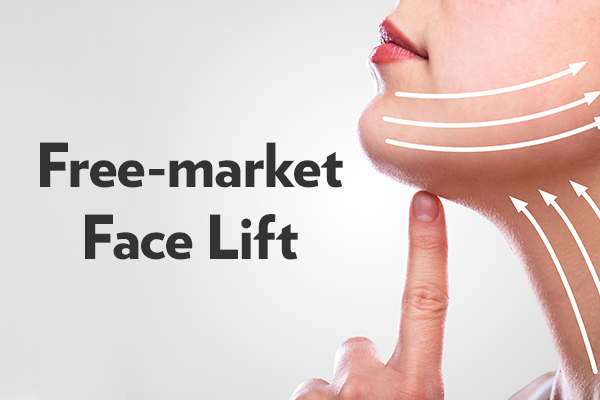Commentary

Free-market Face Lift: How to Make Health Care More Affordable
Thousands of rural Pennsylvanians could be one step closer to more affordable and accessible care: Today the House Health Committee passed Rep. Chris Quinn’s House Bill 2779. This bill would extend for 90 days the suspension of certain bureaucratic regulations holding back our health system—and establish a panel to determine which counterproductive regulations should be eliminated for good. This provides an opportunity for lawmakers to streamline Pennsylvania’s current health care system and plan for cost savings.
Currently, numerous government regulations spanning almost every area of health care have been suspended in the wake of the COVID-19 pandemic. Our report entitled Pa.’s Healthcare Should Always Be Crisis Ready lists many examples.
While regulatory limits on how and where health care professionals can practice prevent access to care, cosmetic procedures are becoming increasingly easier to access because they lack such regulations. Urgent medical treatment should be equally accessible. Lawmakers must act now to give Pennsylvania’s health care the facelift it desperately needs.
Even with insurance, health care costs continue to be an issue, with 53 percent of respondents saying that cost and affordability were their greatest concern regarding health care. This concern isn’t unfounded. Inflation increased 47.2 percent from 1998 to 2016 while hospital service costs rose 176.6 percent and medical care rose 100.5 percent. But as medical costs continue to rise, cosmetic procedures are getting cheaper.
The average price increase for cosmetic procedures over the same time period was 32 percent, which puts it below inflation and means that the procedures are becoming more affordable. Many procedures such as Botox, laser hair removal, and chemical peels have actually declined in cost even without counting inflation.
This begs the question, why have costs for two types of services that are both provided by doctors or other medical professionals experiencing such drastically different price trajectories?
Part of the answer is insurance. Ninety-five percent of Pennsylvanians have insurance to shield them from the true costs of their medical care as doctors and insurance companies negotiate compensation.
This shielding of prices leads to costs that don’t equate with care. While the uninsured annually consume a smaller portion of health services—$1,719 per capita compared to $4,846—they pay a higher amount out of pocket than those with private coverage—$752 compared to $658.
Cosmetic services, on the other hand, are paid directly by the patients, who have an incentive to get the best Botox for their buck. This is the market at work.
While insurance is here to stay, and there are definite benefits to having it, lawmakers should look to the market to minimize how third-party intervention drives up costs. The passage of HB 2779, which cuts costs by cutting red tape, is a significant step in the right direction. But lawmakers can do even more by also clarifying the legal structure for telemedicine.
Telemedicine quickly became an essential service during the COVID-19 outbreak, and use increased by 50 to 175 percent. Lawmakers can help this service remain and even expand after COVID-19 by removing one of the major barriers to its adoption, ensuring that providers will be compensated for these services. Since telemedicine is shown to reduce costs and is more convenient for many, it is a prime opportunity to expand access to care.
Pennsylvanians are right to worry about costs, but instead of turning to a government system, they should look to a private system—like the cosmetic surgery industry—that is reducing costs. Free–market reforms that reduce bureaucratic burdens and breakdown needless barriers to care are the first steps in reducing the rising health care costs that many families are facing. It’s time to give Pennsylvania’s health care the free-market facelift it desperately needs.